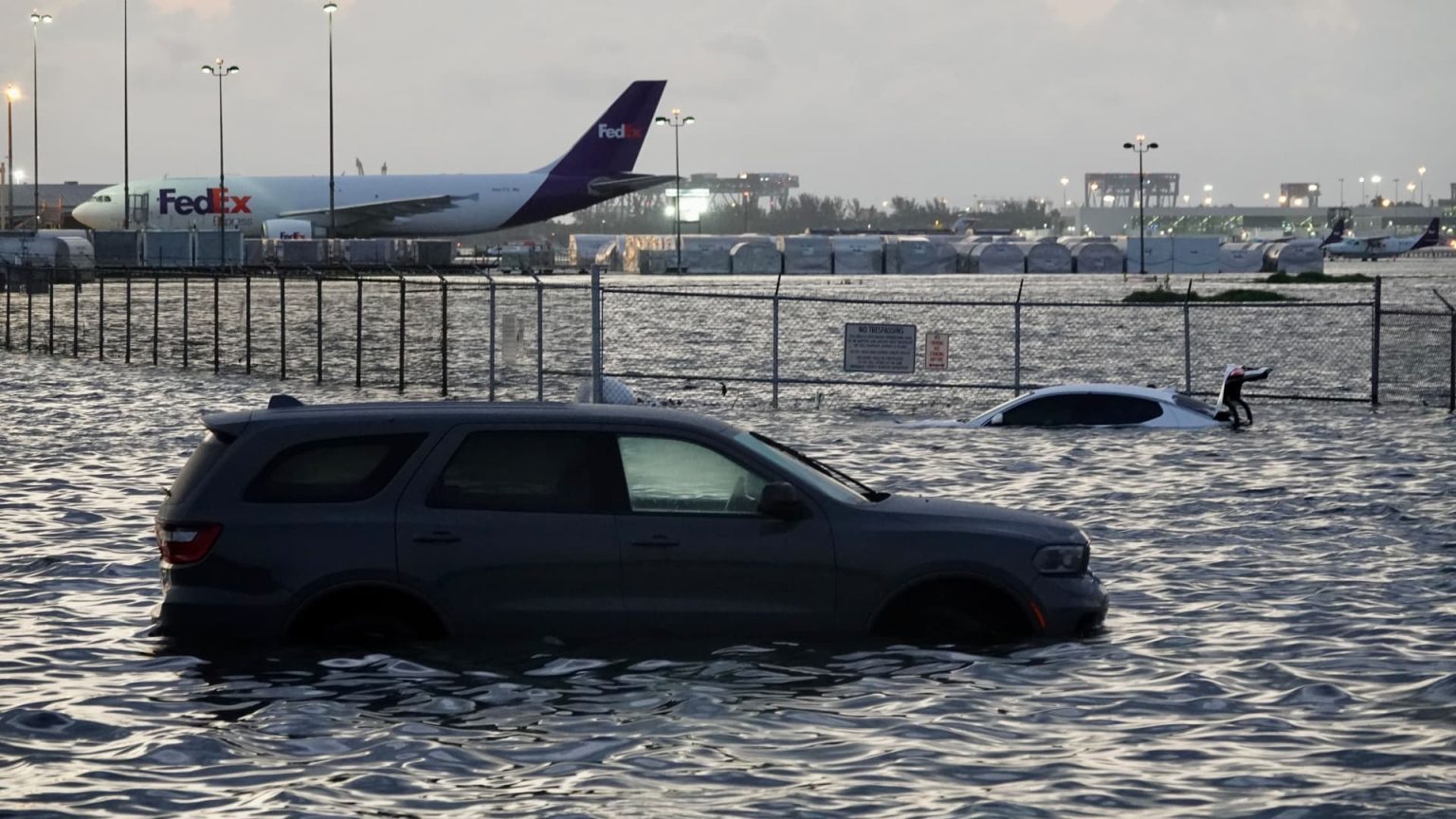The U.S. infrastructure faces mounting challenges exacerbated by climate change, which threatens to undermine its reliability and safety. Severe weather events, such as flooding at airports and heat-related structural issues, have become increasingly common. A recent report from the American Society of Civil Engineers highlights these concerns, giving the nation’s infrastructure an overall grade of “C,” indicating significant vulnerabilities across various sectors.
| Article Subheadings |
|---|
| 1) Overview of Current Infrastructure Challenges |
| 2) Impact of Extreme Weather Events |
| 3) The Role of Climate Risk Analytics |
| 4) The Need for Climate-Resilient Infrastructure |
| 5) Funding and Political Challenges Ahead |
Overview of Current Infrastructure Challenges
The state of U.S. infrastructure has reached a critical juncture, as the American Society of Civil Engineers (ASCE) warns that it is “barely getting a passing grade.” This assessment reflects not only the wear and tear on roads and bridges but also the rapid escalation of climate-related challenges affecting all categories of infrastructure. With systemic vulnerabilities exposed, the ASCE reports that infrastructure has become increasingly at risk from events previously thought to be isolated or regional issues. Officials from the ASCE, including executive director Tom Smith, assert that the situation will only worsen unless immediate and comprehensive actions are taken to fortify crucial systems against environmental stresses.
Impact of Extreme Weather Events
In 2023, significant events underscored how climate change is directly impacting infrastructure. At the Fort Lauderdale/Hollywood International Airport, unprecedented rainfall transformed runways into rivers, halting operations and stranding hundreds of passengers. Similarly, New York City faced a harrowing challenge when extreme heat caused the metal of a bridge over the Harlem River to expand, leaving it stuck in an open position. Such occurrences reflect a disturbing trend where all types of infrastructure—from transportation to telecommunications—are now under siege by severe weather conditions. As emphasized by the ASCE, these types of incidents are becoming alarmingly frequent and are raising alarms on a national scale.
The Role of Climate Risk Analytics
A substantial portion of U.S. infrastructure—19% of all power systems, 17% of telecommunications frameworks, and 12% of airports—is identified as having a significant risk exposure due to climate-related pressures such as floods, winds, or wildfires, according to climate risk analytics firm First Street. Such assessments are increasingly critical for stakeholders invested in infrastructure, as they provide vital insights into potential vulnerabilities. As infrastructure ages and the climate shifts, the imperative for data-driven risk mitigation has intensified. Investors and agencies are seeking guidance on how to align their funding strategies with emerging climate realities, thus prioritizing resilience and sustainability.
The Need for Climate-Resilient Infrastructure
Experts agree on a unifying theme: climate resilience must be incorporated into infrastructure planning and execution. Sarah Kapnick, formerly the chief scientist at the National Oceanic and Atmospheric Administration, indicates that her clients increasingly inquire about the climate impacts on their investments. Queries range from necessary infrastructural modifications to considerations of different types of insurance required to protect against climate-related risks. Emphasizing the vital need for data, officials like Tom Smith underline the importance of a science-driven approach. “Climate and science is something that we take very, very seriously,” Smith stated, signifying that future infrastructure designs must bridge climatic data with engineering to ensure public safety.
Funding and Political Challenges Ahead
Despite the urgent necessity for investment to bolster the climate resilience of the nation’s infrastructure, significant funding gaps remain. The ASCE estimates a staggering $3.7 trillion required over the next decade just to attain a state of good condition for U.S. infrastructure. Cuts in funding, such as those imposed by the Trump administration—which terminated nearly $1 billion earmarked for the Building Resilient Infrastructure and Communities program—have further complicated the situation. As agencies struggle to address these systemic issues, the broader implications of such funding setbacks may hinder future capacity to withstand inevitable climate pressures.
| No. | Key Points |
|---|---|
| 1 | U.S. infrastructure is rated a “C” overall by ASCE, indicating various vulnerabilities from climate change. |
| 2 | Extreme weather events like flooding at airports and bridge malfunctions in NYC highlight structural weaknesses. |
| 3 | A significant proportion of crucial infrastructure faces major risks from climate-related events, according to risk analytics. |
| 4 | There is an urgent call for climate-resilient infrastructure planning, with stakeholder discussions focusing on protective measures. |
| 5 | Funding challenges exist, with significant budget cuts hampering the development of resilient infrastructure systems. |
Summary
In conclusion, the pressing need to reassess and fortify U.S. infrastructure against the realities of climate change has become undeniably urgent. As experts warn about increasing vulnerabilities leading to potential crises, decisive actions in funding, planning, and implementation are essential. The pathway towards a more resilient infrastructure landscape lies in prioritizing science-based designs and considerable investment, which is imperative for safeguarding public welfare and ensuring the sustainability of vital services in years to come.
Frequently Asked Questions
Question: What recent weather events have affected U.S. infrastructure?
Recent events include severe flooding at Fort Lauderdale/Hollywood International Airport and a bridge malfunction in New York City due to extreme heat, highlighting significant vulnerabilities in infrastructure systems.
Question: Why is climate resilience important for infrastructure?
Climate resilience is vital to ensure infrastructure can withstand and adapt to increasing extreme weather events, thereby safeguarding public safety and enhancing sustainability.
Question: What are the financial implications of climate change on infrastructure?
Experts indicate a significant funding gap exists, with an estimated $3.7 trillion required over the next decade to address deficiencies and build climate-resilient infrastructure.


